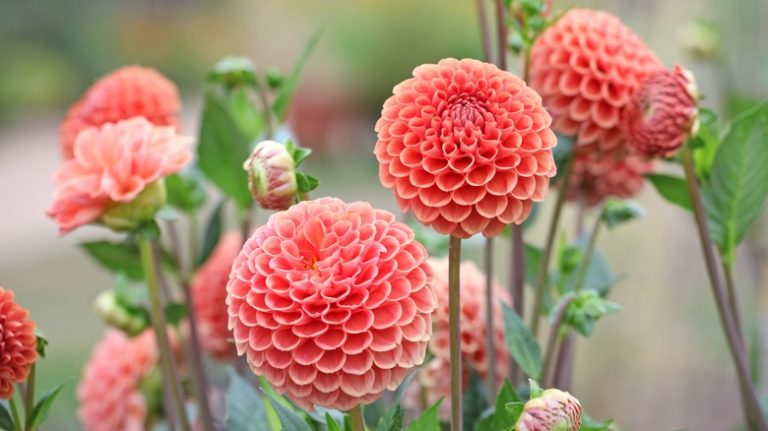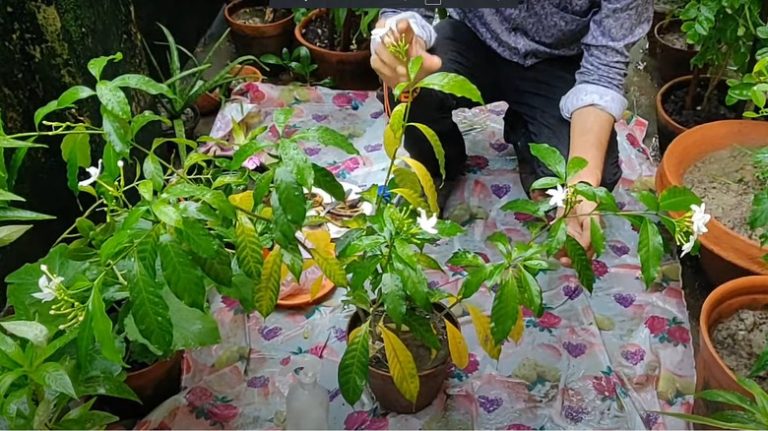If you don’t have a variety of purple flowers in your garden, you don’t know what you’re missing. One variety that you should consider is Torenia. Also known as “amethyst”, this beautiful flower is a favorite among gardeners. The Torenia genus includes several species, with Torenia fournieri being the most frequently grown. This plant is characterized by its preference for shade and humidity, making it a perfect choice for gardeners who enjoy a more relaxed approach to gardening.
The Torenia catalina ‘Amethyst’ is a hybrid variety that has gained popularity for its vibrant purple color and low maintenance requirements. This compact plant is perfect for small garden beds and containers, as it doesn’t take up much space. It also has a high tolerance for heat and humidity, making it suitable for growing in a variety of climates. Whether you have a sunny front yard or a shady patio, Torenia will thrive and add a touch of beauty to your outdoor space.
Growing Torenia from seed is relatively easy, although it can be propagated through cuttings as well. If you choose to start from seed, sow the seeds indoors several weeks before the last frost date, as Torenia is sensitive to cold temperatures. Once the seedlings have grown a few inches tall, they can be transplanted to a larger planter or directly into the ground. To ensure healthy growth, provide them with regular watering and fertilize them every few weeks.
Moreover, Torenia is relatively pest-resistant and can tolerate a wide range of soil types, although it prefers well-draining soil that retains moisture. If you live in a drier climate, make sure to water your Torenia frequently to prevent dehydration. Additionally, Torenia can be a great companion for other plants, such as blue alyssum or white begonias, as they complement each other’s colors and grow well together.
Overall, Torenia is a stunning and versatile plant that brings a splash of purple to any garden. Its compact size, low maintenance requirements, and ability to thrive in various climates make it a favorite among gardeners. So, whether you’re a serious horticulturist or just starting your gardening journey, consider adding Torenia to your collection and enjoy the beauty it brings to your outdoor space.
How to Plant and Grow Wishbone Flower
Wishbone flower, also known as Torenia, is a beautiful and popular plant that is native to Kauai, Hawaii. It is known for its sweet fragrance and attractive flowers, which come in various colors including blue, white, and purple.
If you’re looking to plant wishbone flower in your garden, here are some tips:
- Choose a location that receives partial shade or filtered sunlight. Wishbone flower prefers light shade, especially during the hot summer months.
- Prepare the soil by adding organic matter such as compost or well-rotted manure. This will improve the soil’s fertility and drainage.
- Plant the wishbone flower seedlings or young plants in the prepared soil, spacing them about 8-12 inches apart.
- Water the plants regularly, keeping the soil evenly moist. Wishbone flower prefers a slightly humid environment.
- Fertilize the plants every two weeks with a balanced fertilizer to promote healthy growth and abundant blooming.
- Deadhead the spent flowers to encourage continuous blooming throughout the season. Wishbone flower is a self-cleaning plant, so it will drop its faded flowers on its own.
- Monitor the plants for any signs of pests or diseases, and take necessary measures to control them.
- In colder zones, wishbone flower can be grown as an annual. In warmer zones, it is a perennial that will come back year after year.
- If you live in a colder climate, you can also grow wishbone flower in containers. This will allow you to bring the plant indoors during the winter months.
- If the plants start to outgrow their containers or become rootbound, you can repot them into larger pots to accommodate their growth.
- Wishbone flower is a perfect companion plant for other shade-loving flowers such as impatiens, begonia, and alyssum. They complement each other in terms of growth habit, flower color, and texture.
- Wishbone flower plants have a mounding growth habit, with the stems trailing and cascading over the edges of containers or hanging baskets.
With proper care and attention, wishbone flower will reward you with its stunning blooms and lush foliage. Follow these tips, and you’ll have beautiful wishbone flowers growing in your garden in no time!
Wishbone Flower Overview
The Wishbone Flower, also known as Torenia, is a popular annual flower that is loved for its vibrant and colorful blooms. It is native to Asia and comes in various shades of blue, yellow, and purple. The flowers are usually trumpet-shaped and have a unique “wishbone” pattern in the center, which gives it its name.
Wishbone Flowers are moisture-loving plants, so they thrive in humid and moist conditions. They are known for their tolerance to high humidity and can handle partial shade. If you live in a hot and humid climate, Torenia is an excellent choice for your garden.
When it comes to planting Wishbone Flowers, it is important to choose a well-draining soil. These plants prefer a soil that is rich in organic matter and retains moisture well. They should be watered regularly, especially during dry spells and hot summers. However, be careful not to overwater them, as this can lead to root rot.
Wishbone Flowers are low-growing and compact, making them perfect for borders and container gardening. They can be grown from seeds or purchased as young plants from nurseries. They have a relatively short lifespan of about four months, but they produce an abundance of flowers during that time.
One of the most popular types of Wishbone Flowers is the “Clown” series, which features large, colorful blooms in shades of pink, yellow, and white. Another popular variety is the “Large Rose Yellow” Torenia, which has large, rose-shaped flowers in a vibrant yellow color.
If you’re looking to attract pollinators to your garden, Wishbone Flowers are a great choice. Bees and butterflies are attracted to their bright flowers, and they can help pollinate other plants in your garden.
In summary, Wishbone Flowers are a beautiful addition to any garden, with their vibrant colors and unique wishbone pattern. They are easy to grow and require minimal maintenance, making them perfect for both novice and experienced gardeners. Whether you’re looking to add a splash of color to your borders or create a stunning display in your containers, consider adding Wishbone Flowers to your garden.
Where to Plant Wishbone Flower
When it comes to choosing a place to plant wishbone flowers, there are a few factors to consider. Wishbone flowers, also known by their scientific name Torenia, are native to the tropical regions of Asia and Africa. They thrive in warm climates and can be grown in zones 10 and 11. If you live in a cooler zone, you can still enjoy these beautiful flowers as annuals.
Wishbone flowers make great companion plants in the garden. They pair well with other shade-loving plants like begonias and impatiens. Their bright and showy flowers come in various colors including purple, white, blue, and yellow. Wishbone flowers have a mounding growth habit and their attractive foliage adds interest to any garden.
One frequently asked question about wishbone flowers is whether they can be grown in containers. The answer is yes! Wishbone flowers are the ideal plant for containers. They have a compact growth habit, making them perfect for small pots. They also have good heat and humidity tolerance, making them suitable for growing in larger containers as well.
When it comes to planting wishbone flowers, choose a location that receives bright, indirect sunlight. They prefer rich, well-drained soil. Before planting, make sure to amend the soil with organic matter to improve its fertility and drainage.
Once planted, wishbone flowers require minimal care. They are relatively disease-free and can tolerate a wide range of weather conditions. However, they may require pruning to maintain their compact shape and encourage continuous flowering.
In summary, wishbone flowers are beautiful plants that can thrive in a variety of growing conditions. Whether grown in the ground or in containers, they are sure to add color and interest to your garden. Plant them in a well-drained location with bright, indirect sunlight, and they will reward you with their stunning blooms.
How and When to Plant Wishbone Flower
Wishbone flower, also known as Torenia, is a beautiful flowering plant that is easy to grow and adds a pop of color to any garden or container. Here is an overview of how and when to plant wishbone flower:
Planting Dates: Wishbone flower can be planted outdoors after the last frost date in your area. If you are starting from seeds, it is best to start them indoors 6-8 weeks before the last expected frost date.
Soil and Potting: Wishbone flower prefers a well-draining soil with a slightly acidic pH. You can use a general-purpose potting mix or create a mix of equal parts peat moss, perlite, and compost. Make sure the pot or container has good drainage to prevent overwatering.
Light and Temperature: Wishbone flower grows best in partial shade or filtered sunlight. It can tolerate some direct sun, but too much can scorch the delicate foliage. Ideal temperatures for wishbone flower range from 60 to 80 degrees Fahrenheit (15 to 27 degrees Celsius).
Water and Humidity: Wishbone flower prefers consistently moist soil. Water the plants regularly, especially during hot and dry periods. Avoid overwatering as it can cause root rot. The plant also thrives in humid conditions, so misting the foliage with water can help increase humidity.
Overwintering: Wishbone flower is often grown as an annual but can be overwintered indoors if you live in a cold climate. Bring the plant indoors before the first frost and place it in a cool, bright location. Water sparingly and allow the plant to go dormant. In spring, you can start watering and fertilizing again to encourage new growth.
Companion Plants: Wishbone flower is a good companion plant in the garden. It pairs well with other shade-loving plants like begonia, impatiens, and ferns. Its low-growing and spreading habit also makes it an ideal choice for filling in the front of flower beds or containers.
Propagation: Wishbone flower can be propagated from seeds or cuttings. To propagate from seeds, sow them on the surface of moist potting mix and lightly press them into the soil. Keep the soil moist and warm, and the seeds should germinate within 1 to 2 weeks. To propagate from cuttings, take stem cuttings with at least two pairs of leaves and place them in a moist potting mix. Keep the cuttings warm and moist until they root.
Commonly Asked Questions: If you have any questions about growing wishbone flower, don’t hesitate to ask. Wishbone flower is a versatile plant with a variety of cultivars to choose from, including the popular ‘Catalina’ and ‘Clown’ series, as well as the heat- and humidity-tolerant ‘Kauai’ and ‘Fournieri’ series. It comes in a range of colors, from purple and blue to pink, yellow, and white. With its beautiful flowers and attractive foliage, wishbone flower is sure to brighten up your garden.
Image by Peter Krumhardt / CC BY-SA 4.0




